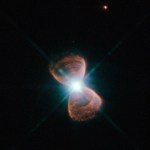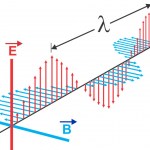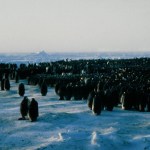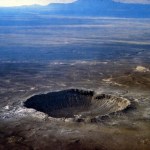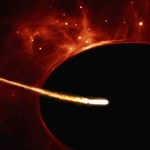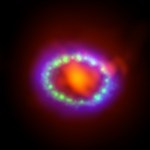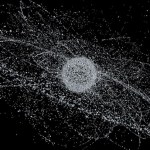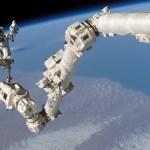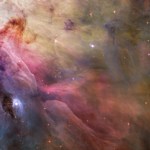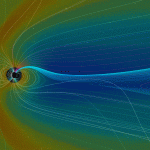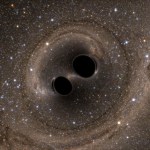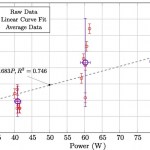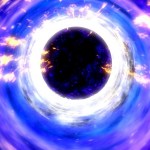
"A bit of mould is a pleiad of flowers; a nebula is an ant-hill of stars." -Victor Hugo
In the distant future, about 7 billion years from now, our Sun will run out of all the nuclear fuel it’s capable of burning in its core. As it contracts under its own gravity, radiation becomes unable to hold it up any longer. Gravitation takes over, and the outer layers get blown off as the core contracts down into a white dwarf.
A star reaching the end of its life goes from fusing nuclei to blowing off its outer layers and contracting down. Image credit: NASA, ESA, and A. Zijlstra (The University of…
"You're not looking for perfection in your partner. Perfection is all about the ego. With soulmate love, you know that true love is what happens when disappointment sets in - and you're willing to deal maturely with these disappointments." -Karen Salmansohn
It's been a great week full of great stories from the Universe here at Starts With A Bang! The topic for the next podcast has been chosen and you should get to see it all next week: on whether our Universe is the inside of a black hole or not! (It's a fun one; you won't want to miss it!) Most of us were clouded out of the…
"Each ray of light moves in the coordinate system 'at rest' with the definite, constant velocity V independent of whether this ray of light is emitted by a body at rest or a body in motion." -Albert Einstein, 1905
The more kinetic energy you impart to something, the faster you go. But there’s a limit: the speed of light in a vacuum. In fact, if you have any mass at all, you’ll never reach it; if you have no mass, it’s the only speed you can travel at. But why is it finite instead of infinite? Why does it have the particular value it has? And why couldn’t it be faster or slower under different…
“First, you should check out my house. It’s, like, kinda lame, but way less lame than, like, your house.” -Lumpy Space Princess, Adventure Time
Billions of years ago, before the Universe contained clusters, galaxies, stars or even neutral atoms, everything was uniform. Almost perfectly uniform, where the densest regions weren’t even 0.01% denser than average. Over billions of years, those overdense regions have attracted more and more matter and grown under the influence of gravity.
Both simulations (red) and galaxy surveys (blue/purple) display the same large-scale clustering patterns.…
"October extinguished itself in a rush of howling winds and driving rain and November arrived, cold as frozen iron, with hard frosts every morning and icy drafts that bit at exposed hands and faces." -J.K. Rowling
As cold as it gets outside over the coming months, particularly with the effect of a displaced polar vortex in play, there’s another factor that can make it feel even colder: the wind. Coupled with extremely cold temperatures, the Windchill factor can exacerbate this tremendously, stripping the heat from your body and putting you at risk of various cold-related traumas.
Collisions…
"Bringing an asteroid back to Earth? What's that have to do with space exploration? If we were moving outward from there, and an asteroid is a good stopping point, then fine. But now it's turned into a whole planetary defense exercise at the cost of our outward exploration." -Buzz Aldrin
Between recent statements from NASA, the American Geophysical Union and Los Alamos National Laboratory, you might think that humanity is overdue for a catastrophic impact from outer space. Indeed, it’s been a long time since we’ve had one that was very destructive, and other than the 1908 Tunguska blast, we…
"Even with all the collected data we cannot say with 100% certainty that the ASASSN-15lh event was a tidal disruption event. But it is by far the most likely explanation." -Giorgos Leloudas
Last year, a record-shattering event occurred: we saw the brightest supernova ever observed in the Universe. It outshone the previous record holder by more than double, and it reached a peak brightness of more than 20 times the sum total of all the stars in the Milky Way galaxy. Surprisingly, it occurred in a red, quiet galaxy, rather than the bright blue ones famous for them. After 10 months of follow-up…
"When we recall the past, we usually find that it is the simplest things - not the great occasions - that in retrospect give off the greatest glow of happiness." -Bob Hope
When a very massive star reaches the end of its life, it runs out of burnable fuel. As a result, the core collapses, heats up and undergoes a runaway fusion reaction. While many heavy elements are formed and a tremendous amount of energy is released, the very core implodes, tearing apart the outer layers of the star in a supernova explosion.
An animation sequence of the 17th century supernova in the constellation of…
“They always say time changes things, but you actually have to change them yourself.” -Andy Warhol
Any week that passes by that leaves you knowing more than when you started is a good one here at Starts With A Bang! I hope this past week didn't disappoint, as many of you became acquainted not only with our latest podcast on parallel Universes, but with some amazing new articles on science and the Universe. Even as the year winds down, there's plenty more to explore! Here's what the past week held:
How do gravitational waves escape from a black hole? (for Ask Ethan),
An X-…
“I’m coming back in… and it’s the saddest moment of my life.” -Ed White, at the end of his first spacewalk
A great many of us had dreams of becoming an astronaut when we were younger, and many of us still have that dream today. But turning that dream into reality involves a lot of choices, a lot of hard work, a lot of trade-offs and a lot of luck. Having “the right stuff” is no guarantee that you’ll get there, but if you’re willing to put in the work, there’s plenty you can do to maximize your chances.
Teamwork is essential to future astronauts, as astronaut candidates Tyler N. (Nick) Hague…
"We are not the same persons this year as last; nor are those we love. It is a happy chance if we, changing, continue to love a changed person." -W. Somerset Maugham
After 13.8 billion years have gone by, you might not think that a year makes much of a difference. A year to the Universe is like 0.2 seconds -- the literal blink of an eye -- to a human being. Yet even though changes might be gradual, they’re real, and they very much add up over time.
A region of the Orion Nebula, one of the largest and most rapidly-star-forming regions where star birth takes place. Image credit: NASA, ESA and…
"It is worthy of notice that in Table VI the brighter variables have the longer periods. It is also noticeable that those having the longest periods appear to be as regular in their variations as those which pass through their changes in a day or two." -Henrietta Leavitt
The past year has held a slew of victories and defeats, positives and negatives and everything in between for us all. Don’t lament the bad; instead, set yourself up to enter 2017 with something wonderful in hand: an appreciation of the wonder of the natural Universe.
Incredible Stories from Space, and the author with…
"We are inside this plasma,
and plasma is inside everything. It is incandescent
in the sun, and I am curious to know if you
are able to stop orbiting yourself around it even for a second." -Marieta Maglas
The phenomenon of solar flares has been understood qualitatively but not quantitatively for a long time. The Sun's magnetic field confines its plasma into thin sheets of electric current, and when the field changes, the lines split and reconnect, causing the plasma to be expelled at tremendous rates. This same physics underlies solar flares, Earth's aurora, laboratory plasmas and possibly…
"The bedrock nature of space and time and the unification of cosmos and quantum are surely among science's great 'open frontiers.' These are parts of the intellectual map where we're still groping for the truth - where, in the fashion of ancient cartographers, we must still inscribe 'here be dragons.'" -Martin Rees
In 2015, LIGO collected data from a total of three candidate gravitational wave events, all of which were announced and released in 2016. These events verified the great prediction of Einstein: that decaying orbits should emit gravitational radiation with specific magnitudes and…
"I'll never, ever be full. I'll always be hungry. Obviously, I'm not talking about food." -Dwayne 'The Rock' Johnson
Only a very small percentage of galaxies have active supermassive black holes. While the black holes themselves are common, they only rarely feed, gaining a huge influx of matter to accelerate and send jets and other emission out. When a galaxy does become active, they can appear in any number of interesting manifestations, dependent on their orientation relative to us.
The unified model of AGNs/Active Galactic Nuclei. Image credit: Robert Antonucci, aka Ski, of http://web.…
“A thing may be of deeper impossibility than another, in the sense that you can be more deeply underwater–but whether you are five feet or five fathoms from the surface you are still all wet.” -Brian McGreevy
It's been a spectacular week of investigating the Universe and our knowledge about it here at Starts With A Bang! There were a great many of you wondering about parallel Universes over the past month, and that's exactly -- in the context of quantum physics and cosmic inflation -- what this past month's Starts With A Bang podcast was on. Check it out!
This past week also…
"I think there are a number of experiments that are thinking about how you could look in different frequency bands, and get a glimpse of the primordial gravitational wave background. I think that would be really revolutionary, because that would be your first glimpse at the very first instant of our Universe." -Dave Reitze, LIGO's executive director
Black holes are remarkable entities that have puzzled and fascinated us since they were first postulated long before Einstein developed his theory of relativity. One of their fundamental but bizarre properties is the fact that once something…
“There is nothing new to be discovered in physics now. All that remains is more and more precise measurement.” -Lord Kelvin
The particle physics ‘nightmare scenario’ was that the LHC at CERN would achieve its desired energies and collision rates, that it would find a single Higgs boson between about 120 and 140 GeV, and that it would see absolutely nothing else. No new particles, no bizarre decays, nothing that couldn’t be accounted for by the Standard Model. With the latest release, that’s exactly what’s happening.
The observed Higgs decay channels vs. the Standard Model agreement, with the…
"When a scientist says something, his colleagues must ask themselves only whether it is true. When a politician says something, his colleagues must first of all ask, 'Why does he say it?'" -Leo Szilard
There are claims flying around all the time that science is corrupt, politicized, and that the robust scientific conclusions reached about a number of issues are unreliable. Whether it's about vaccines, HIV/AIDS, fluoride, climate change or the genetics of sexuality (or a host of other issues), you will often see the rare scientist who dissents from the mainstream highlighted along with the…
"...axions are potentially detectable through their weak coupling to electromagnetism..." -Aaron Chou
We know, from hundreds of years of experience with the laws of physics, that momentum is strictly conserved, and therefore a reactionless drive is impossible. What's not impossible is an engine that has a reaction that's simply invisible, or otherwise undetectable to us. This has been seen in experiments involving neutrinos, but NASA's impossible space engine, the EMdrive, offers another possibility: a dark matter reaction.
Image credit: ESO/L. Calçada, of the illustration of the dark matter…
